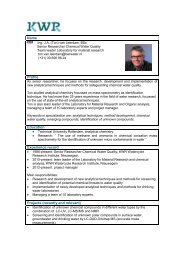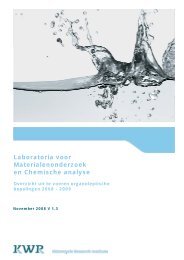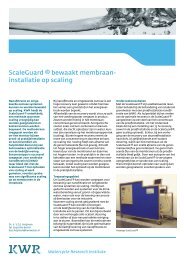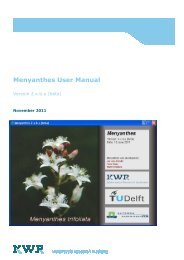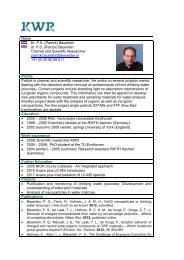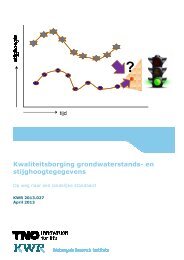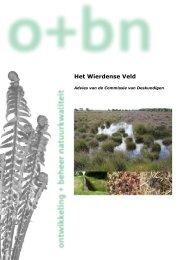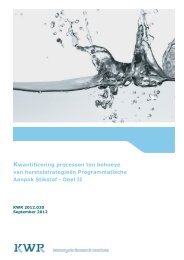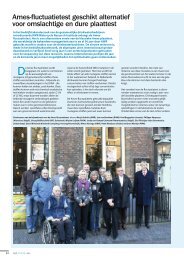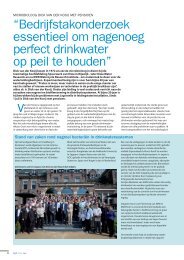Jos_von_Asmuth_Thesis.pdf - repository
Jos_von_Asmuth_Thesis.pdf - repository
Jos_von_Asmuth_Thesis.pdf - repository
Create successful ePaper yourself
Turn your PDF publications into a flip-book with our unique Google optimized e-Paper software.
`Ü~éíÉê=N=OM=Abstract:Appreciating the contents of this thesis requires some knowledge of its background, i.e.the methods and theory on (geohydrologic) time series analysis and systemidentification. In this chapter, a basic introduction is given, and different views on thesubject are presented. First, some thought is given to the systems approach in general,as to date, most (geo)hydrologist are less familiar with system identification methodsthan with e.g., spatially-distributed groundwater models. In short, the system viewpointcan be characterized by the fact that in essence it is top-down. The system viewpoint treatsa groundwater system first as a 'whole' and not bottom-up, as an aggregate of cells, layersand/or elements, which is still the mainstream viewpoint. Having said this, also from thesystems perspective, there are different ways in which a groundwater system, or anysystem for that matter, can be perceived, modeled and/or analyzed.Time series analysis is a method that originates from the statistical sciences. In principle, itdoes not require any knowledge of the physical functioning of the system underconsideration. In its basics, it can be seen as a variant of simple, linear regression, and thecoefficients in the regression equation, either autoregressive or moving averageparameters, do not have a physical meaning a priori. From a physical point of view, on theother hand, a central concept is the so-called impulse response function, as it completelycharacterizes the functioning of a linear time-invariant system at a certain point in space.Impulse response functions can be inferred from a data set through time series analysis,but also using 'purely' physically-based methods, either analytic or numeric (in case oflinear systems). This means that impulse response functions can also be derived from thedifferential equation and boundary conditions that belong to a certain geohydrologicsystem and its schematization.In this thesis, a 'mix' between both worlds is developed and presented. In this approach,the time series analysis problem is formulated in a continuous time domain. It allows forthe use of (continuous) distribution functions that have a statistical origin, as well asphysically-based analytic response functions. Distribution functions of skew-Gaussiannature, like the scaled gamma distribution, prove to fit the behavior of a wide range ofsystems quite well. Next to that, a further link between the physically-based world ofgroundwater modeling and time series analysis is established using moments of impulseresponse functions, as these can also be generated directly and spatially using momentgeneratingdifferential equations, implementable in any standard groundwater model...…………………………………………………………………………………………….….



